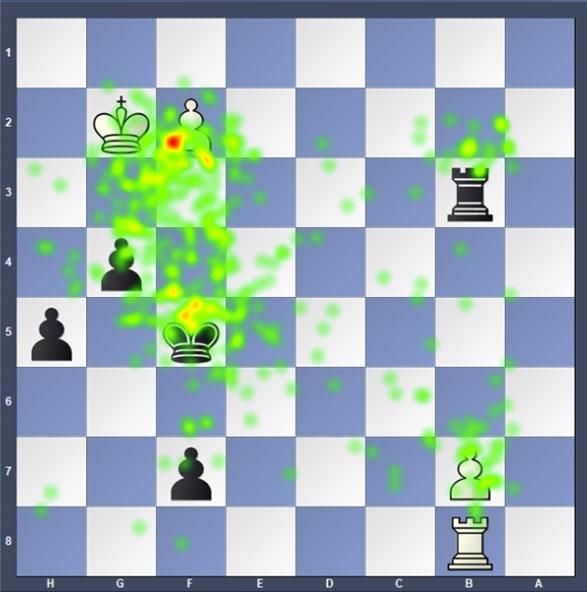The results are in! Here are the best books of 2022:
- Improve Your Chess Calculation by R.B Ramesh
- Think Like a Super-GM by Michael Adams and Philip Hurtado
- A Matter of Endgame Technique by Jacob Aagard
- The Taimanov-Scheveningen Hybrid by Semko Semkov
Improve Your Chess Calculation
There are many aspects of chess that need to be trained in order to secure points and see results. Calculation is possibly one of the most important ones. It is also very difficult, and requires precise visualisation. The good news is that it can be trained! The more you train your mind to calculate variations, the clearer they will become, which also means that they could become longer (seeing into the future is a chess player’s superpower after all!).
Then “Improve Your Chess Calculation” enters the conversation, a book that not only highlights the importance of calculation but offers the reader the tools to improve it (I think the book’s title gives this away). You will be given various exercises to solve WITHOUT moving the pieces. It will take a lot of willpower, I know, but this is how we play chess and this is how we improve our visualisation.
Moreover, this book is written by one of the world’s best and most successful coaches, R.B. Ramesh. Having coached many elite Indian International Masters and Grandmasters, GM Ramesh has a wealth of understanding how players think and what mistakes are made while calculating. He has done big things in the chess world, including winning the Mark Dvoretsky award for best 2019 Juniors Coach from FIDE. All of this has culminated in an exemplary chess book.
The book feels like a conversation, where GM Ramesh speaks to the reader as a player and a coach. He poses questions from the student’s point of view, and subsequently answers them. This is more than a collection of positions to solve, but rather a book of thorough explanations and insight to how one should approach positions and calculation.
Let’s take a look at an example position from Chapter 4: Forcing Moves. Each chapter starts with an introductory explanation, and here the author writes that “one of the quickest ways to improve calculation is by learning to calculate forcing moves quickly and correctly” where the concept of forcing moves include checks, captures, threats, and pawn breaks.
Game 65 – Level 2
Lars Bo Hansen (2580) – Giovanni Vescovi (2465)
Copenhagen 1995 (4)
White to move
Ramesh writes, “A brief look at the position shows that Black’s kingside is completely deserted for the moment. He has clustered his pieces on the queenside. White could use this moment to attack en masse! What do you think?
We know that our chess abilities are quantitative, which is calculated through the Elo system. But what are the differences in thought processes that make up a player’s level? In “Think Like a Super-GM“, the authors approach this question with a scientific investigation where 40 chess puzzles were shown to a panel of players ranging from occasional club players up to the Super-GM strength of co-author Michael Adams.
The focus was placed on numerical data such as:
- Time taken to make a move
- Time taken to spot the best move
- Evaluation of the position
The above metrics were used to find correlations with the player’s FIDE rating, thus shedding light on what defines superior chess strength.
For the reader, this book does not only offer insight to the minds of various leveled chess players, but also enables you to compare your thinking to theirs through solving the same puzzles used in the experiment. You will be able to read conclusions from the puzzles, as well as conclusions by Michael Adams which is labeled “Grandmaster Secrets” in the book, and expands on points ranging from “Know when to calculate” to “Prioritization and breaking the rules.” There is clearly a lot to learn from here!
Let’s take a look at a level 3 puzzle:
Puzzle 19
Black to move
But wait, there’s more! This chess experiment was supplemented by another one – an Eyetracker experiment where cameras observed player’s eye movements during calculation, which “resulted in heat maps showing squares on the board players focused most heavily on.” The reader is given the same set of puzzles, with a conclusion by Adams. Here is an outcome example of the eye-tracking results of the warm up puzzle:

Fascinating, right? And this is only the tip of the iceberg of what the book has to offer. But don’t just take my word for it, the books 5 star rating speaks for itself.

Have you ever experienced the toil of studying endgame theory, trying to memorise the patterns, just hoping that it never comes up in a game? Well, you are not alone, and although we cannot neglect the importance of studying endgames, we can find easier ways to do so. This is exactly what “A Matter of Endgame Technique” brings to the table – a book that explains “the technical and practical areas of chess endgame plainly, simply and deeply” without the need for memorising, you will instead learn the correct technique which can be applied to various positions.
Hundreds of concepts are covered (yes, hundreds – just take a look at the table of contents) and explained with examples, where each chapter is supplemented with a preceding exercise chapter filled with puzzles varying in difficulty. This gives the reader the opportunity to gauge your endgame ability and learn from mistakes.
Let’s take a look at an example exercise:
Black to move
Solved it? The author later goes through the position in Chapter 1 under one of the most important endgame concepts, Opposition:
The author, Grandmaster Jacob Aagard, is one of the most successful chess authors with a multitude of published books and awards. His success as a coach is more than notable, with students who became Grandmasters to Olympiad medalists. The proof is in the pudding, and this might just be one of the best authors to learn from.
The Taimanov-Scheveningen Hybrid
Yes, an opening book also made it on the list! Players generally have a bias to openings that they prefer, but whether you are a Sicilian player or not “The Taimanov-Scheveningen Hybrid” book “offers an intriguing approach by inserting the Scheveningen set-up into Taimanov, a unique combination that is guaranteed to surprise your opponent.
The repertoire is based on the Taimanov move order with: 1.e4 c5 2.Nf3 e6 3.d4 cxd4 4.Nxd4 Nc6! 5.Nc3 Qc7.
So where does the Scheveningen set-up fall in? Well, the author selects the best of both worlds based on White’s response. The author explains that the “Taimanov works excellently against the English Attack and early kingside storms” but becomes a little bit testing against responses such as White’s 6.g3 fianchetto and the Classical System with 6.Be3 a6 7.Be2. This is where the …d6 Scheveningen set-up enters the room.
The author explains theory step by step, looking at all of White’s responses, and also gives multiple annotated games for reference. Moreover, to help with memory, the author includes a “Typical patterns” section at the end of chapters which, as the title suggests, emphasises on patterns and key points to remember. Along with this, the reader is given single-standing example positions to practically understand the concept and see it in action. All of this makes the material really easy to digest!
Without getting into theory, here is an example of the types of explanations to expect:

The author then shows the concept of the …f5 break in a practical position:
18…f5!=
The author, Semko Semkov, is an International Master with a wealth of experience as an author and a Sicilian player so you can trust that the theory is based on practical play and practice. With 12 5-star reviews on Forward Chess, it is clear that the jury has also spoken!
And that’s all folks! Let us know in the comments which of these books you are going to try out first.
- The Power of Pattern Recognition: The Woodpecker Method 2 - August 20, 2024
- Rock Solid Chess: Volume 2 - February 21, 2024
- Unsung Heroes of Chess - February 19, 2024




